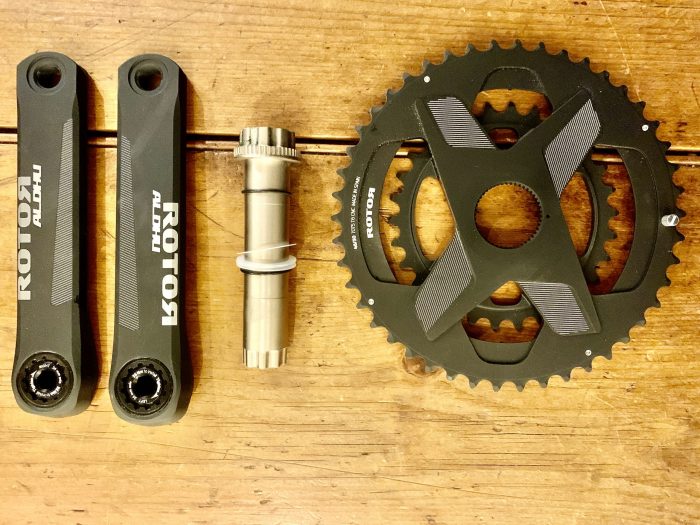Top Road Bicycle Technologies of the Past Twenty Years – Crank Length Options
 From handlebars to saddles, we have been happy to see a variety of ergonomic improvements and broader options in a host of fit based components. It is great that all riders are not being treated alike and that there is more understanding that there are many people who need handlebars wider and narrower than 40cm and 42cm. However, if we are to point at one place where research really changed the equation when it came to bike set-up, it would be crank length.
From handlebars to saddles, we have been happy to see a variety of ergonomic improvements and broader options in a host of fit based components. It is great that all riders are not being treated alike and that there is more understanding that there are many people who need handlebars wider and narrower than 40cm and 42cm. However, if we are to point at one place where research really changed the equation when it came to bike set-up, it would be crank length.
For decades, the general thought had been that longer cranks were better. I remember in ’98 having 5’ 1” pro triathletes request 175mm cranks on their bikes. Thinking about the biomechanical implications of that combination makes me cringe (and my knees hurt) today. If we are to look at one person who flipped this equation it would likely be Dr. Jim Martin, who pioneered research on crank length in the early ‘00’s. Dr. Martin’s research demonstrated that crank lengths were not being adjusted proportionately for smaller sized bikes in particular.
While it was a bit of a slow burn for these concepts to pass from academia, through bike fitters and coaches, and finally to bike manufacturers, progress has been made. While we don’t see grossly long cranks on many XS road bikes these days, the evidence remains that readily available options from Shimano, SRAM and Campy remain too long for many smaller riders. Meanwhile, on the mountain bike side, there remains a lot of room for improvement on cross country and trail bikes in particular. The functional benefits of shorter crank lengths go well beyond biomechanics on mountain bikes.
Shorter cranks are one of the most effective component changes many riders who are struggling with joint or saddle issues can make to reduce strain.
On the other end of the spectrum, it is worth noting that readily available crank lengths are also too short for many of the tallest riders. In the end, it should be understood that crank length doesn’t alter your power production nearly as much as it can encourage certain muscle recruitment patterns. For the asymptomatic cyclist, it is a good idea to keep the crank length proportionate to the rider. For the symptomatic cyclist, many will benefit from a shorter than average crank length and a few will benefit from a longer length. While there is still a good deal of room for improvement, thankfully, there are many more crank options today than there were twenty years ago and it has been quite assistive to many riders.

